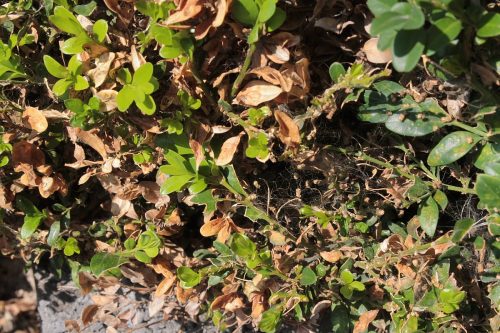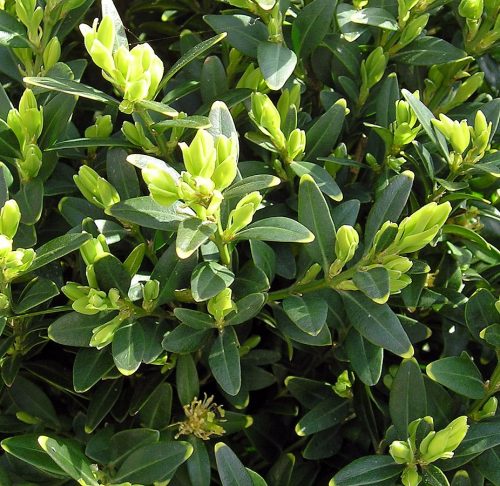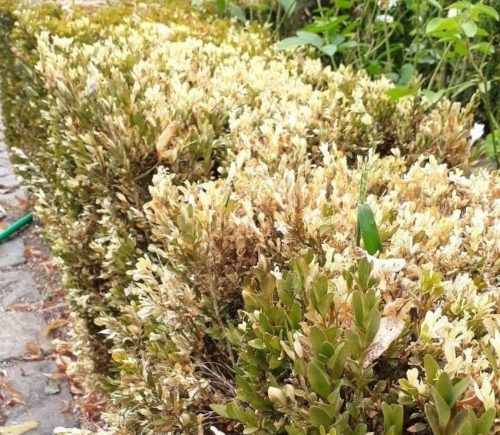Evergreen, hardy shrub, Buxus Sempervirens is the most common species.
Also known as:
Boxwood
You are viewing the mobile-adapted version of the page.
The one for tablets, laptop and desktop also provides general information, such as origin, toxicity and cultivation.
- All parts of common box are toxic to humans and animals, especially the bark and leaves. Common box is also poisonous to birds (chickens!).
Common box, an evergreen shrub in family Buxaceae. Common box is easy to prune. Buxus Sempervirens is the most commonly planted Buxus-species. Common box is a slow grower: a shrub of less than half a meter only grows a maximum of fifteen cm per year.
To keep common box in shape it should be pruned regularly; always do this before the end of June. The longest day (June 21) is an easy date to remember for this purpose.
Fertilizing in early spring, summer (June and August) keeps common box healthy. Special common box fertilizers (magnesium and a specific ratio of nitrogen and potassium) are available, but fertilizing with dried cow manure or chicken manure also works well.
Common box grows best in soil with a slightly acidic to neutral acidity (pH): 5.5 to 7. If acidity is too low, spreading lime is necessary.
Common box likes a nutrient-rich, fertile soil that is not too wet. A handful of compost at the bottom of the planting hole helps the shrub grow. Common box likes both (semi) shade and the sun. The shadier, the darker the leaves.
Bugs

Initially leaf mines become visible, then blisters as the caterpillars eat away the chlorophyll on the underside of the leaves. Then leaves are eaten away and sometimes entire bushes. Later, webs appear between the branches: caterpillars of the box tree moth (Cydalima perspectalis).
Deformed buds with spoon-shaped leaves – especially on older shrubs that are not pruned often: Boxwood psyllid (Psylla buxi).

Buds do not sprout, turn yellow and die: Boxwood bud mite (Phytoptus canestrinii).
Fungi & diseases

Dark brown patches turning to black on leaves and branches. The leaves wither, but remain attached to the common box. In humid weather, the shrub can die in a few days: box blight (Cylindrocladium buxicola). Aggressive fungus for which no effective pesticide has yet been found.


